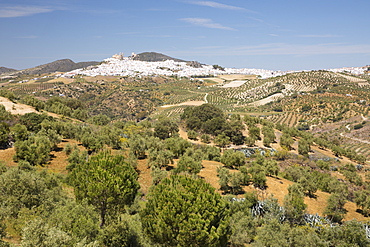Recent searches
Loading...
832-400665 - Greek salad with fresh tomatoes olives and feta cheese healthy eating food from above on slate with text free space in Stuttgart, Germany, Europe
832-400126 - Slice of marbled beef carpaccio on fork over black background
832-399696 - Shrimps with garlic, olive oil and parsley in frypan on black background
832-399697 - Shrimps with garlic, olive oil and parsley in frypan on black background
832-399699 - Prosciutto with different appetizers with glass of red wine on black background. Over roasted vegetables, healthy snack
832-399707 - Vegetarian tomato tart or puffed pizza with herbs on black background
832-399720 - Shakshouka - dish of eggs poached in a sauce of tomatoes, olive oil, peppers, onion and garlic on black background
832-399719 - Assortment of appetizers and tapas with red wine on black background
832-399739 - Assortment of appetizers and tapas with red wine on black background
832-399738 - Assortment of appetizers and tapas with red wine on black background
832-399314 - Traditional Turkish pizza pide freshly baked with ground beef and vegetables served on black stone background with assorted Middle Eastern meze from above, cuisine of Turkey
846-3171 - Locorotondo town on hilltop with trulli houses and olive grove below in the Valle d Itria, Locorotondo, Puglia, Italy, Europe
846-3172 - Locorotondo town on hilltop with trulli houses and olive grove below in the Valle d Itria, Locorotondo, Puglia, Italy, Europe
832-390608 - Black olive from above, slate plate, Germany, Europe
846-586 - Sheep in olive grove, Patsos, Rethimnon (Rethymno) region, Crete, Greek Islands, Greece, Europe
746-88582 - Durum wheat spaghetti pasta seasoned with dried tomatoes, black olives, Pantelleria capers, oregano and extra virgin olive oil, Italy, Europe
746-88581 - Durum wheat spaghetti pasta seasoned with dried tomatoes, black olives, Pantelleria capers, oregano and extra virgin olive oil, Italy, Europe
746-88583 - Durum wheat spaghetti pasta seasoned with dried tomatoes, black olives, Pantelleria capers, oregano and extra virgin olive oil, Italy, Europe
1116-42785 - Food - Prepared dishes garnished with chopped green onions (scallions), including Chicken and Cheese Enchilada, Cheese and Mushroom Omelet, and Twice-Baked Potatoes with Bacon.
846-2948 - Moorish castle above white village with olive groves, Zahara de la Sierra, Sierra de Grazalema Natural Park, Andalucia, Spain, Europe
846-2953 - Typical Andalucian landscape with olive groves and white town of Olvera, Cadiz Province, Andalucia, Spain, Europe
846-2801 - Andalucian landscape with white farmhouse and olive trees with mountains in distance, near Granada, Andalucia, Spain, Europe
846-2666 - Pebble beach and bay with olive tree, Lakka, Paxos, Ionian Islands, Greek Islands, Greece, Europe
1174-2123 - Organic food presented on white dishes for a party. Cheese, free range chicken, heritage tomatoes and salad ingredients. Farmstand foods, Salt Lake City, Utah, USA
846-1633 - Olives in the souk, Essaouira, Atlantic coast, Morocco, North Africa, Africa
1161-5627 - Black olives in grove of traditional olive trees, Val D'Orcia, Tuscany, Italy
817-410339 - Olive baboon, Papio Anubis, Olive baboons are widespread throughout equatorial Africa and are found in 25 countries. From the west coast of Africa moving eastward. In the picture there is a mother with a juvenile, the mother is eating some grass and the s. Olive baboon, Papio Anubis, Olive baboons are widespread throughout equatorial Africa and are found in 25 countries. From the west coast of Africa moving eastward. In the picture there is a mother with a juvenile, the mother is eating some grass and the small one is in its back. In Uganda, olive baboons live in open woodland bordered by savannah and in evergreen tropical forests At Queen Elizabeth National Park, situated in Uganda, near the border of Democratic Republic of Congo, the habitat is characterized by dense forest, coarse wet grass, short grass and open grassland. Olive baboons consume a wide variety of foods and they can adapt to very different kind of habitats, from desert to mountain forest because they have many different strategies and habilities to extract food and nutrients. Baboons are omnivores and consume a huge variety of vegetables, insects, birds, eggs, and vertebrates including other primates. The Olive Baboon is one of the largest baboons, with the males being larger than the females. Their body length is 60, 86 cm, their tail length is 41, 58 cm and they weigh between 22 and 37 Kg. There is some geographical variation in average size. They have an olive green/grey coat that covers their bodies and a black face. The males have large canine teeth where as the teeth of females are much smaller. They move around on all four limbs. They live in troops of males and females that consist of between 20 and 50 members. The picture was taken in Ugande, in the Queen Elizabeth National Park, near the Kazinga channel., Uganda, Africa, East-africa
817-267954 - Traditional Greek Food Plates of Black Olives, Graviera and Soft Myzithra Cheeses
817-69299 - Food: Reblochon and Camembert cheeses, Pate de Tete and Pate de Campagne, ham, black olives and 'Cornichons', Dordogne, France.
700-11275 - Croatia, Dalmatia, Dalmatian Coast, Hvar Island
700-11273 - Croatia, Dalmatia, Dalmatian Coast, Hvar Island
557-3058 - Priests in black holding olive wood crosses in procession to the River Jordan during Christian Orthodox ceremony at Epiphany, Qasr el Yahud, Israel, Middle East
557-3057 - Priests in black holding olive wood crosses in procession to the River Jordan during Christian Orthodox ceremony at Epiphany, Qasr el Yahud, Israel, Middle East
You reached the end of search results








































